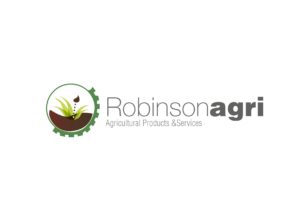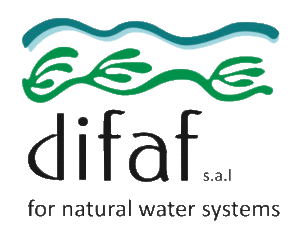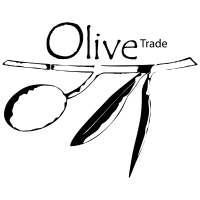The Hackathon is open to innovative solutions tackling any agri-food challenge of your choice. You can also check the below real life challenges provided by local companies and NGOs that tackle different aspect of the agri-food value chain:

Robinson Agri
Robinson Agri launched its operation in 1970 by designing, producing and installing greenhouses and irrigation systems, and today are leaders in design, manufacturing, installation and service of greenhouses. In 1986, Robinson Agri began expanded its operations to include crop protection. Agrigrow, Robinson Agri’s innovative nursery is a leading provider of vegetable plants. www.robinsonagri.com
Case Challenge #1
Lack of Early Warning Systems:
Sudden drop in temperature and occurrence of frost at night or early morning severely damages the vegetable crops grown in green houses as well as in open fields, such as potatoes and cucumbers. Frost can cause a yield loss of up to 80% of
the total yield, as occurred last year in Akkar.
Farmers do not have early warning systems, they do not know when such conditions are likely to occur so they do not know how to deal and use protective measures to prevent the impact. Today, they get their information from the TV weather forecast and SMS from LARI. Translating the data into action is a challenge for farmers given their limited knowledge, and their reliance on their instinct and experience in managing it. Early warning systems are required for farmers and can be linked to sms services whereby not only warns against frost but also recommends the proper action to be taken.
Case Challenge #2
Lack of Informative Alerts:
Farmers lack of awareness and information on pest management. For example, table grape producers face risk of Mediterranean fruit fly that can damage their whole produce, and they cannot know in advance of when the fly may reach their field or when a disease is likely to happen. They spray pesticides every 3 days, leaving high residues in the fruit and reducing chances of being exported.
Early warning systems that share information and tips help farmers take the right measures without risking access to markets.
Case Challenge #3
Adapting to Local Factors:
Various systems are available abroad for hydroponics, including NFT. However, they are costly and can cost between 45-48 $/m2 excluding the greenhouse installation. The main parameters to consider in any system are the electrical conductivity (EC) and Acidity (pH). The conductivity is mostly related to artificial lighting.
The challenge is that amidst the continuous power cuts, there is no uniform artificial lighting across all the plants, and thus variation in the yield. The solution is to find out how to ensure uniform proper lighting and adaptation of the standard NFT systems to meet the local demand at an affordable price.

Difaf
Difaf is a consultancy and technical design bureau born in 2014 in Lebanon from a team of engineers, natural scientists, and policy experts. Our mission is to identify activities and assess impacts on water and environmental systems, and to design, implement, and monitor engineering solutions using appropriate technologies in order to promote better natural resources conservation, management, and restoration. We are eager to deliver proficient cross-disciplinary work tailored for resilient localized successes. Difaf bridges the gap between science and policy, and to deliver measurable and direct improvements in water and environmental resource management.
Case Challenge #1
Restaurants waste food by the tons every day. Good food gets thrown into garbage disposals. The waste is varied in terms of type,quantities, time of day and seasonality. Restaurants have little space for individual treatment and management. Organize a system for restaurant food waste management and treatment through composting or biogas.
Case Challenge #2
Organise a collaborative business model where: collection, transport and treatment operations are systematized, treatment occurring at one location, all stakeholders benefiting financially (or other..) from waste disposal or treatment by-products, O&M is sustainable. By-products could include all or some of the following: biogas, compost, fertilized water, more food.

Olive Trade
Olivetrade is a market leader in Lebanon, specialized in the production and sales of olive-derived products. Olivetrade builds on centuries of traditional Mediterranean knowhow in the olive culture coupled with the highest standards of cultural and harvesting practices, state of the art production and storage facilities (ISO 22000: 2005, eco label), and a socially responsible commitment to fair trade, to consistently deliver a high quality produce that conforms with international norms. Named after the Phoenician word for oil, their exclusive signature brand, Zejd® , is showcased at their flagship store, “House of Zejd”, in Beirut and selectively available at high end specialized stores in Lebanon as well as in France, Germany, Switzerland, Nigeria, Kuwait, India, New Zealand, United Arab Emirates, United Kingdom, United States of America, Hong Kong, and Japan.
Case Challenge
Optimization of production process:
We are looking to optimize our continuous olive oil production line that can process up to 2 tons of olives per hour. Our current average yield is 1.1 tons per hour. This difference in productivity is caused by the different batch sizes that we receive from the farmers (100 kg to 700 kg).
Our production line consists of the following steps:
- Washing and crushing the olives continuously.
- 4 Individually separated malaxers with maximum capacity of 700 kg each to knead the paste. Each batch of olives goes into one malaxer and stays there for 45 minutes at 28 degrees Celsius, whatever the quantity.
- Then it is sent to the next step of separating the oil from the water and the husk in a continuous line.
| 100 kg | 200 kg | 300 kg | 400 kg | 500 kg | 600 kg | 700 kg | |
| washing + crushing | 2 min | 4 min | 6 min | 9 min | 11 min | 13 min | 15 min |
| Malaxing (@28 degrees) | 45 min | 45 min | 45 min | 45 min | 45 min | 45 min | 45 min |
| Separation | 4 min | 7 min | 11 min | 14 min | 18 min | 21 min | 25 min |
Not being able to control the size of the batches we receive, we need to optimize the order of the batches going in the production line to have the best possible yield per hour. Once the production of oil is finished, the end product is stored in stainless steel tanks waiting for its packing. We currently pack 100 different SKU’s all originating from the olive fruit. We need to automate our current system of traceability (based on ISO:22000) that we fill on excel sheets to be done with a production management system.

Chateau Kefraya
Case Challenge #1
Automatic inspection of empty and filled bottles:
Objective: Having only faultless products to reach the points of sale.
Similar instruments already exists in the market but they are quite expensive. I imagine two camera on the filling line automatically connected to a software (Cloud based or else) and connected to the Fault button of the machine. If any undesired particle is detected in the bottle, it will directly alert the operators by stopping the machine. In addition, another option could be integrated: automatic bottle counting, Lot number, number of corks, caps,… Daily automatic work report.
This solution could be interesting for small to medium size producers.
Case Challenge #2
Smart Viticulture
- Smart Viti To All:
Objective: Adapt existing equipment for precision viticulture
The high initial investment and the presence of existing equipment is an obstacle for the adoption of smart viticulture. Some producers already have their existing equipment, sometimes new one. The possibility to find simple solutions to adapt existing spreaders and sprayers would be an interesting solution toward the possibility of usage of smart viticulture practices. Mapping the parcels is an initial step before the adoption of smart viticulture.
- Smart Pruning:
Objective: Improve the work precision to the grapevine level, positive impact on productivity and wine quality
After mapping different zones in the vineyard, a simple GPS guided system on smartphone (In addition to precision localization) would help to give pruning orders (precise the number of buds to leave on each grapevine). More precision at work. This opportunity for the localization of each grapevine will have several other usage.
- Treatment monitoring:
Objective: Adapt the vineyard treatment to the sensibility of each zone (Precision viticulture)
Smart installation of IoT sensors (Reduce the number of sensor to have the same efficiency) to be able to use disease monitoring models. The data from will be used by the smart sprayers.
- Drone Personal Assistant
Objective: Smart drone as Personal assistant for the vineyard manager
A Smart Drone that go to the field to make sure that the working instructions and productivity are as initially requested by the vineyard manager. The drone can count the number of workers, take pictures, and alert in case of any unusual problem. In addition, this drone, by going through the vineyard, can detect diseases, deficiencies, slow growth etc…

Green Studios
Greenstudios aims on bringing life to cities by initiating agricultural innovations through the help of smart automated systems that allow people from all domains to operate a live garden with minimal maintenance and attention. By developing sensors and programs that can keep you connected you to a farm, vertical garden or roof garden anywhere in the world. People can have the opportunity to manage and operate their own micro garden to their own satisfaction, regardless of their skills in the field of agriculture.
Case Challenge
Essential agricultural household needs from a day to day basis are neglected in our society due to several factors. Agricultural Engineers and farmers face major challenges to produce a high quality high yield product which eventually don’t sell at a profitable margin. Engineers are constantly developing new technologies to produce more and more with low consideration into market studies that can boost their profits. Lack of knowledge from consumers for seasonal harvests, types of farming techniques being used, and ideal (close by) locations of agricultural fields is a major set back for this social negligence.
During the regular cycle of farm to fork operations, farmers and consumers coexist in a disconnected environment. Farmers have no market demand study to follow and consumers are almost unaware of market supply.
Generally, farmers produce what is commonly known to be highest in demand/price. Yet when it comes to selling, competitive prices dominate the market and farmers end up with devastating losses after a long season of hard work.
Consumers on the other end, are always interested in uncommon produce that may not be easily available, yet lack major information and access to it.
Limitations and challenge today:
Farmers are unable to profit from seasons of crops due to lack of statistical analysis of the market demands and supplies. Essential products are being neglected due to lack of profits, mostly due to middle man commissions and insufficient information consumer needs.
It is essential for consumers to be connected on a higher scale with suppliers, in which they can manage their monthly household requirements in advance by being directly connected!
The ideal solution aims to solve this problem by:
This dilemma of how to connect the farm to fork requires developed technology that allows both farmers and consumers to have a beneficial relationship. Demand & Supply for agricultural products should be clear enough in order to provide both teams with a mutual benefit.
Challenge
Develop a conceptual idea for urban/suburban farming techniques that allow consumers to have a direct connection with producers. Smart apps, urban farms, social networking and other techniques are the modern methods for connecting people in different locations, fields of work and social classes.

Unifert sal
Unifert provides comprehensive solutions to the agricultural industry by :
Offering Integrated Crop Management solutions by supplying Hybrid Seeds, Pest Control programs, Plant Nutrition programs, fully controlled Irrigation & Fertigation systems and Landscaping services in addition to all other agricultural needs …..
Offering farmer technical support and Extension Programs via 25 well experienced TCP’s “Techno-Commercial Promoters” through recommending the use of the right product at the right time
Introducing the up-to-date innovated materials such as Bio-pesticides and Bio-fertilizers, advanced hybrid seeds and bio-stimulants.
Introducing safe and Eco-friendly products. Going Green and Embracing Nature.
Case Challenge
- Adverse weather conditions and water scarcity are highly affecting farmers by:
- Not planting on the right time, hence facing lots of constraints.
- Achieving lower income due to lower yield quantity and quality wise.
- Increasing pests and disease infestations causing great losses.
- Wasting of materials such as fertilizers, pesticides, etc…
- Replacing high quality Agri-Products by cheap, generic or counterfeited products
- Delaying their dues and many are going Bankruptcy
- Abandoning and or selling their lands for construction & other urban uses etc….
The current operations model and current scenario
- Farmers follow specific traditional predictable agricultural practices in order to perform their task. However with the climate changes complexes, those practices are no more predictable like plowing time, pests and disease infestation, water precipitation levels, temperature variations.
Limitations and challenge today
- The Farmer is being confused and the agricultural sector is going into chaos. Dealing with farmers is becoming more difficult.
- Unifert business is jeopardized:
- Unsecured sales and working under High risks
- Over financing the agriculture sector
- Not being able to meet farmer’s needs on time
- Facing over stockage of goods in our warehouses.
- Data on current situation:
- Failure of Apple season during 2015-2016 due to apple scab disease
- Mediterranean Fruit Fly is causing big losses on citrus and many other crops
- Seeds virus breakout due to loss of resistance brought by climate changes. Example Tobamo virus damage.
- No more regular precipitations. Either Flood or Drought
Challenge
To innovate a Smart Phone Mobile Application that could provide farmers with consolidated weather forecast data, disease and pest alerts helping to minimize adverse weather damages. This application to be linked to Unifert Customer Service Platform which will be ready to offer Integrated Crop Management solutions.

World Food Programme
The United Nations World Food Programme (WFP) is the world’s largest humanitarian agency, fighting hunger worldwide. WFP provides life-saving food assistance and supports rebuilding for more than 80 million people in 82 countries each year. With about 15,000 staff, most of them working in remote locations across the globe, the organization’s aim is to end hunger globally, but disruptive innovation is needed to reach a world without hunger by 2030.
Case Challenge
CONTEXT AND BACKGROUND INFORMATION
Traditional food assistance in often unable to provide solutions that can increase people’s food security during an emergency, such as conflict and natural disaster. Likewise, there is a need to provide for refugees and their host communities with solutions that can increase their food security whilst reducing their dependence on aid.
THE CHALLENGE
What moonshot innovation would you develop using exponential technology to provide sustainable access to local and nutritious food in a displacement context with an ability to positively impact millions of people in 10 years?
We are looking for low-cost, scalable solutions that enables severely marginalized people to support their (five-member, on average) household food and nutrition needs in a sustainable manner that lowers their dependence on aid and with a potential to strengthen resilience and create livelihood opportunities.
THE IDEAL SOLUTION
Solutions should seek to fulfil the following requirements as much as possible:
- The more portable, the better
- The faster the solution produces food, the better
- The cheaper, the better—for comparison: humanitarian assistance organizations usually spend around $75 per family/per month to provide a family of four with basic food
- The less dependent on external resources such as materials, water, and electricity, the better
- The more nutritious the food the solution produces, the better
- The more the solution engages with and gives back to the host community, the better
- The solution contributes to ending world hunger by 2030
